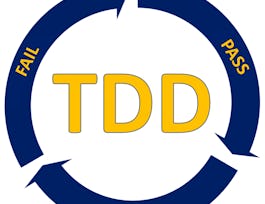In this online course we’ll implement (in Python) together efficient programs for a problem needed by delivery companies all over the world millions times per day — the travelling salesman problem. The goal in this problem is to visit all the given places as quickly as possible. How to find an optimal solution to this problem quickly? We still don’t have provably efficient algorithms for this difficult computational problem and this is the essence of the P versus NP problem, the most important open question in Computer Science. Still, we’ll implement several solutions for real world instances of the travelling salesman problem.


Delivery Problem
This course is part of Introduction to Discrete Mathematics for Computer Science Specialization
Taught in English
Some content may not be translated

Instructor: Alexander S. Kulikov
20,382 already enrolled
Included with 
Course
(367 reviews)
Details to know

Add to your LinkedIn profile
8 quizzes
Course
(367 reviews)
See how employees at top companies are mastering in-demand skills

Build your subject-matter expertise
- Learn new concepts from industry experts
- Gain a foundational understanding of a subject or tool
- Develop job-relevant skills with hands-on projects
- Earn a shareable career certificate


Earn a career certificate
Add this credential to your LinkedIn profile, resume, or CV
Share it on social media and in your performance review

There are 3 modules in this course
We start this module with the definition of mathematical model of the delivery problem — the classical traveling salesman problem (usually abbreviated as TSP). We'll then review just a few of its many applications: from straightforward ones (delivering goods, planning a trip) to less obvious ones (data storage and compression, genome assembly). After that, we will together take the first steps in implementing programs for TSP.
What's included
4 videos1 reading5 quizzes2 ungraded labs
We'll see two general techniques applied to the traveling salesman problem. The first one, branch and bound, is a classical approach in combinatorial optimization that is used for various problems. It can be seen as an improvement of the brute force search: we try to construct a permutation piece by piece, but at each step we check whether it still makes sense to continue constructing the permutation (if it doesn't, we just cut off the current branch). The second one, dynamic programming, is arguably the most popular algorithmic technique. It solves a problem by going through a collection of smaller subproblems.
What's included
4 videos2 quizzes1 ungraded lab
As we've seen in the previous modules, solving the traveling salesman problem exactly is hard. In fact, we don't even expect an efficient solution in the nearest future. For this reason, it makes sense to ask: is it possible to find efficiently a solution that is probably suboptimal, but at the same time is close to optimal? It turns out that the answer is yes! We'll learn two algorithms. The first one guarantees to find quickly a solution which is at most twice longer than the optimal one. The second algorithms does not have such guarantees, but it is known to work pretty well in practice.
What's included
2 videos1 quiz1 ungraded lab
Instructor

Offered by
Recommended if you're interested in Algorithms

Google Cloud

Parsons School of Design, The New School

Rice University
Why people choose Coursera for their career




Learner reviews
Showing 3 of 367
367 reviews
- 5 stars
76.29%
- 4 stars
17.98%
- 3 stars
2.99%
- 2 stars
2.45%
- 1 star
0.27%
New to Algorithms? Start here.

Open new doors with Coursera Plus
Unlimited access to 7,000+ world-class courses, hands-on projects, and job-ready certificate programs - all included in your subscription
Advance your career with an online degree
Earn a degree from world-class universities - 100% online
Join over 3,400 global companies that choose Coursera for Business
Upskill your employees to excel in the digital economy
Frequently asked questions
Access to lectures and assignments depends on your type of enrollment. If you take a course in audit mode, you will be able to see most course materials for free. To access graded assignments and to earn a Certificate, you will need to purchase the Certificate experience, during or after your audit. If you don't see the audit option:
The course may not offer an audit option. You can try a Free Trial instead, or apply for Financial Aid.
The course may offer 'Full Course, No Certificate' instead. This option lets you see all course materials, submit required assessments, and get a final grade. This also means that you will not be able to purchase a Certificate experience.
When you enroll in the course, you get access to all of the courses in the Specialization, and you earn a certificate when you complete the work. Your electronic Certificate will be added to your Accomplishments page - from there, you can print your Certificate or add it to your LinkedIn profile. If you only want to read and view the course content, you can audit the course for free.
If you subscribed, you get a 7-day free trial during which you can cancel at no penalty. After that, we don’t give refunds, but you can cancel your subscription at any time. See our full refund policy.


